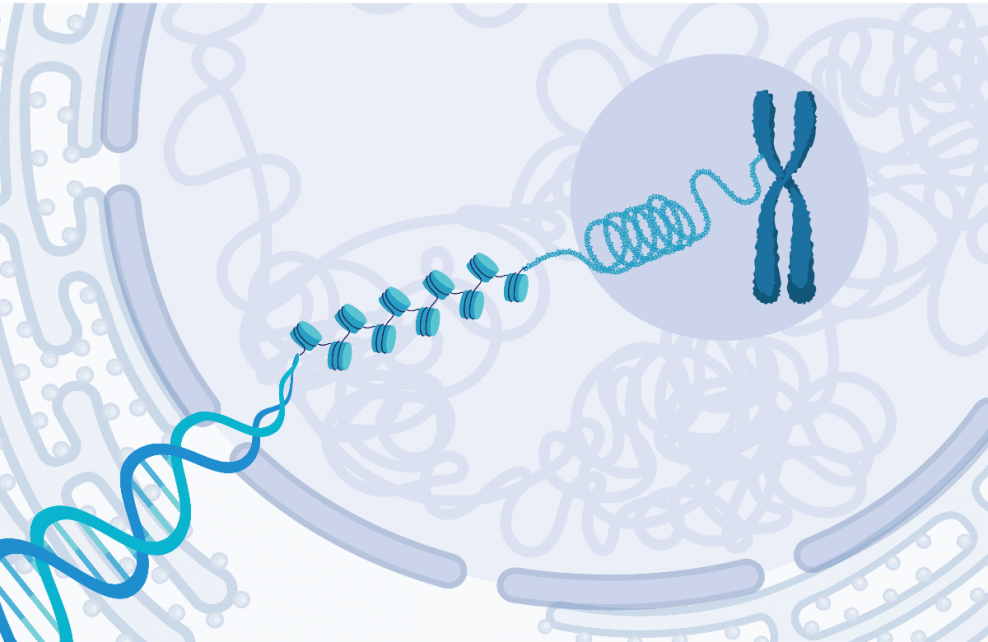Chromatin State of Matter Matters: Is It Liquid or Solid?
Over the last decades, there has been much debate regarding chromatin state of matter. New research solidifies the evidence of chromatin having solid-like behaviour at the mesoscale.
The nucleus is a mysterious place. Like a black hole inside the cell, an immense amount of matter is squeezed into it. Somehow, two meters of DNA—the height of a refrigerator—can fit inside the nucleus that is 1/50th of the size of a grain of salt; Not to mention all the protein and water that is packed along with it. Despite it being absurdly crowded, there is still abundant and well-coordinated activity happening inside, which further mystifies the mighty nucleus. How all that nuclear matter is organized is quite an enigma amongst scientists.
Is Chromatin Liquid or Solid?
Over the last decades, there has been much debate regarding chromatin state of matter. Is it a liquid or a solid? From a dynamics point of view, a liquid state would grant chromatin particles more movement allowing them to carry out their activities. On the other hand, solid matter having tightly packed quasi-static particles could explain how so much chromatin can fit inside such a tiny space. Up until recently, chromatin was believed to be liquid. Now, important work by the labs of Michael J. Hendzel (University of Alberta) and Jeffrey C. Hansen (Colorado State University) solidifies the evidence of chromatin having solid-like behaviour at the mesoscale.
Mesoscale Chromatin is Solid-like
Hilmar Strickfaden and his fellow scientists determined the state of matter inside the nucleus by observing the mixing of nuclear chromatin fibers; They are liquid if they can mix with surrounding fibers within the condensed chromatin, and solid if they are constrained within a specific region. Their observations show that chromatin is in a solid-like hydrogel state—a bit like Jell-O—while proteins that interact with chromatin (i.e., chromatin-binding proteins) are in a liquid state under physiological conditions in vitro and in living cells. Chromatin condenses into clusters (i.e., chromatin condensates) observable at the mesoscale that act as solid scaffolds to the free-flowing chromatin-binding proteins. Whether the condensates are tightly packed into heterochromatin or loosely packed into euchromatin, they remain firmly bound together and display flexible properties reminiscent of a hydrogel. They can sustain external forces, changes in osmolarity (diluted vs concentrated conditions) and structure weakening through induced hyper decondensation.
Neither Too Confined nor Too Relaxed
Like Goldilocks would prefer it, solid-like chromatin is neither too confined nor too relaxed at the mesoscale, which could explain why chromatin can still be dynamic. Though lacking in movement from afar, if we were to zoom in much closer, nanoscale chromatin structures (i.e., nucleosomes) could have liquid-like properties, giving them enough freedom of movement that seems indispensable for chromatin functionality. Granted that epigenetics has revolutionized our understanding of chromatin, biophysics is becoming a key player in cracking the remaining unsolved mysteries.
Learn more
Strickfaden H, et al. 2020. Condensed Chromatin Behaves like a Solid on the Mesoscale In Vitro and in Living Cells. Cell. Dec 23;183(7):1772-1784

